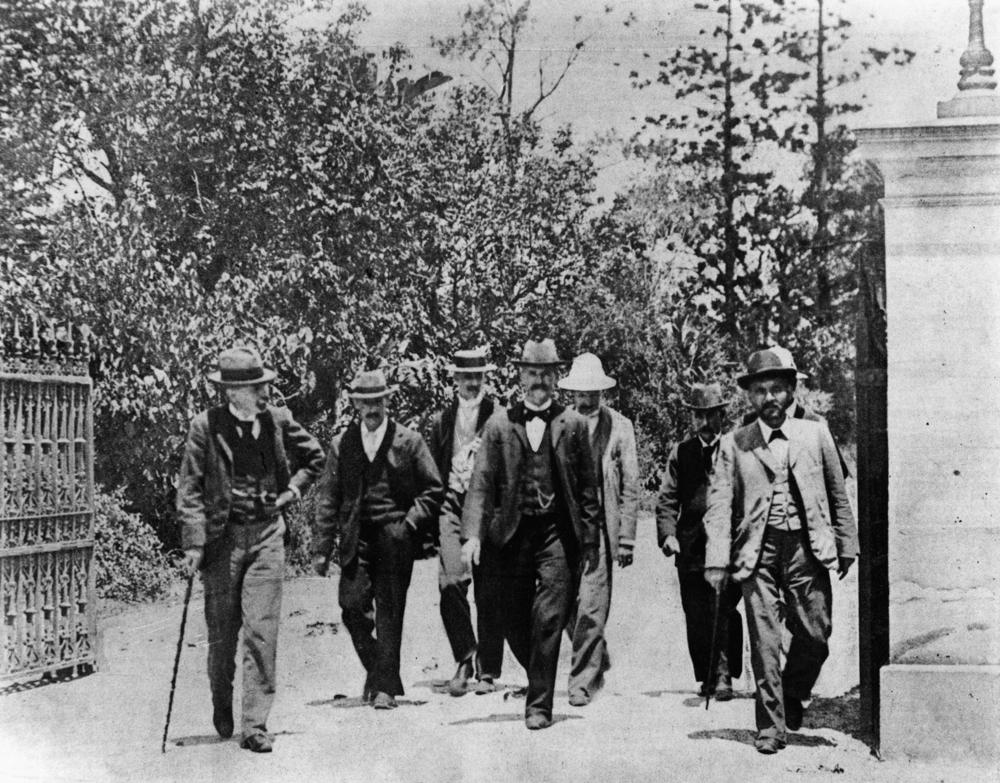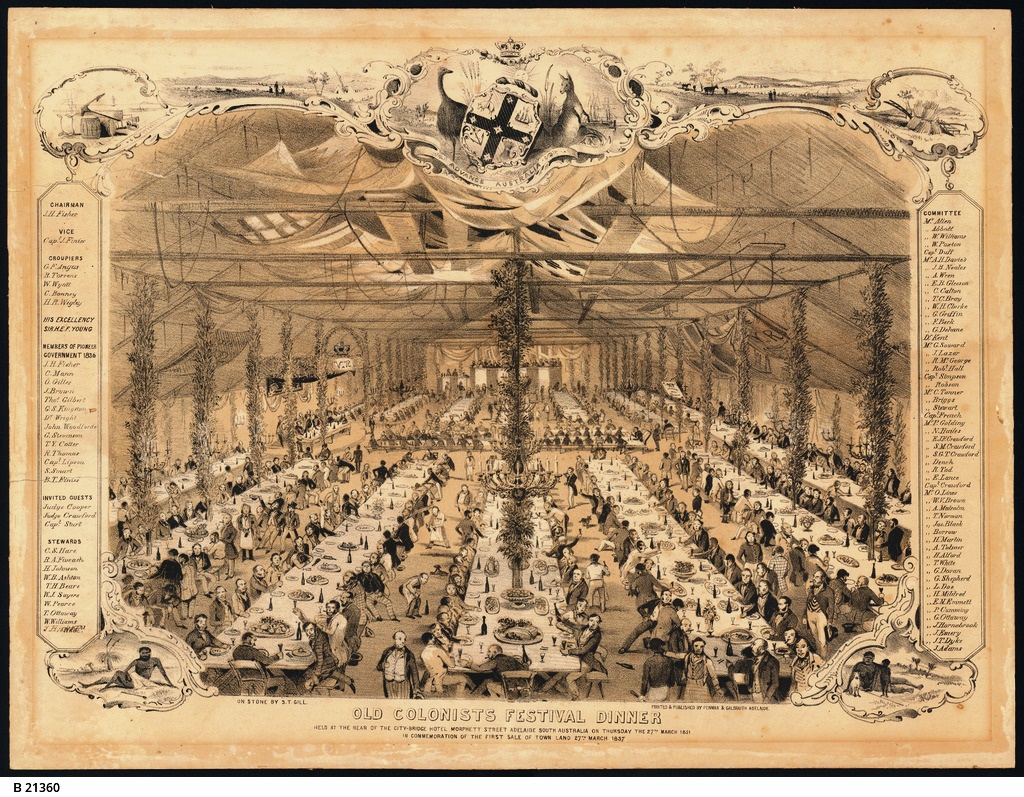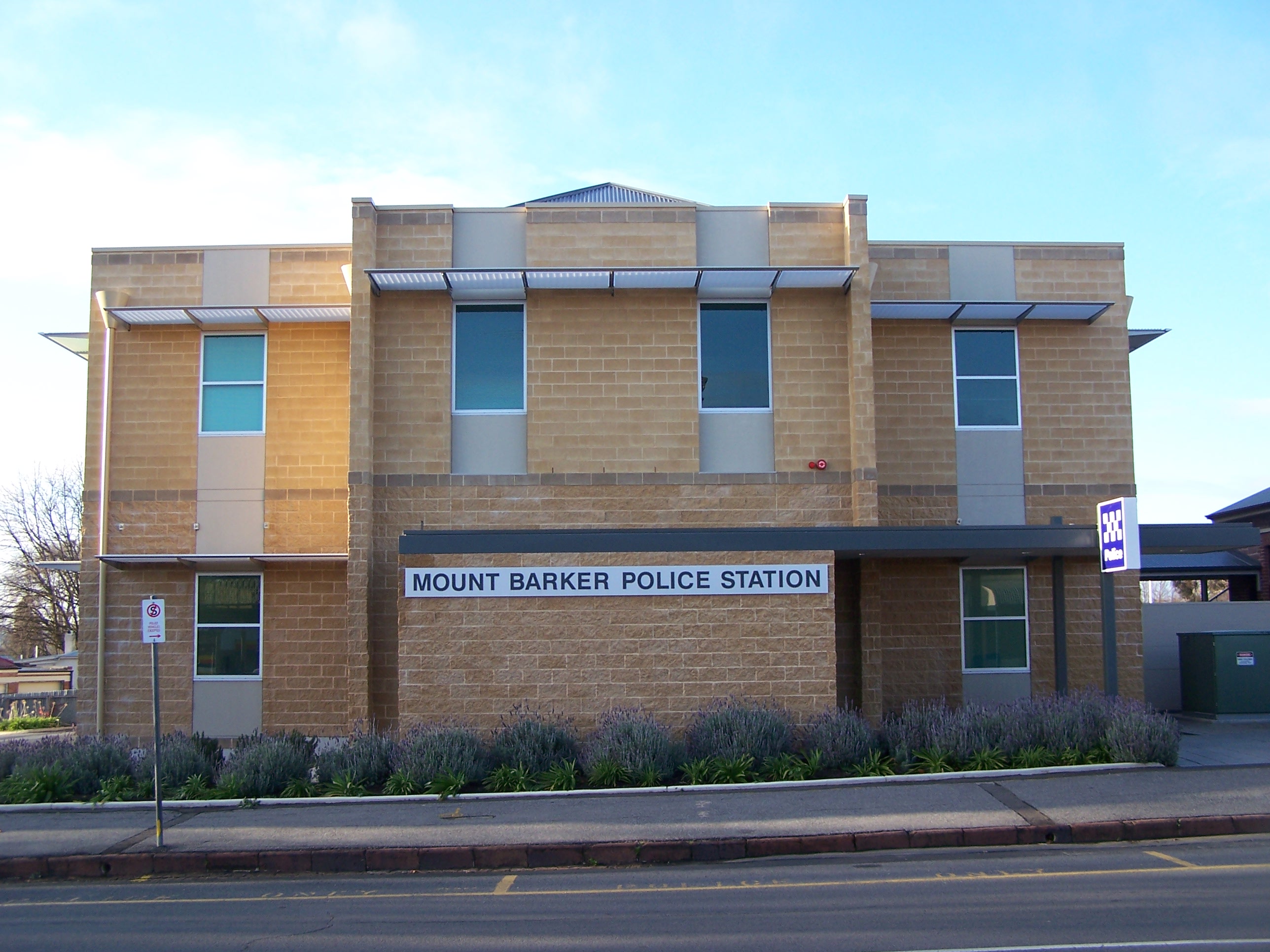|
George Pearce
Sir George Foster Pearce KCVO (14 January 1870 – 24 June 1952) was an Australian politician who served as a Senator for Western Australia from 1901 to 1938. He began his career in the Labor Party but later joined the National Labor Party, the Nationalist Party, and the United Australia Party; he served as a cabinet minister under prime ministers from all four parties. Pearce was born in Mount Barker, South Australia. He left school at the age of 11 and trained as a carpenter, later moving to Western Australia and becoming involved in the union movement. He helped establish the Labor Party there, and in 1901 – aged 31 – was elected to the new federal parliament. Pearce was elevated to cabinet in 1908, under Andrew Fisher, and served in each of Fisher's three governments. He continued on in cabinet when Billy Hughes became prime minister in 1915, and after the Labor Party split of 1916 followed Hughes to the National Labor Party and then to the Nationalists. Pearce also ... [...More Info...] [...Related Items...] OR: [Wikipedia] [Google] [Baidu] |
The Right Honourable
''The Right Honourable'' ( abbreviation: ''Rt Hon.'' or variations) is an honorific style traditionally applied to certain persons and collective bodies in the United Kingdom, the former British Empire and the Commonwealth of Nations. The term is predominantly used today as a style associated with the holding of certain senior public offices in the United Kingdom, Canada, New Zealand, and to a lesser extent, Australia. ''Right'' in this context is an adverb meaning 'very' or 'fully'. Grammatically, ''The Right Honourable'' is an adjectival phrase which gives information about a person. As such, it is not considered correct to apply it in direct address, nor to use it on its own as a title in place of a name; but rather it is used in the third person along with a name or noun to be modified. ''Right'' may be abbreviated to ''Rt'', and ''Honourable'' to ''Hon.'', or both. ''The'' is sometimes dropped in written abbreviated form, but is always pronounced. Countries with common or ... [...More Info...] [...Related Items...] OR: [Wikipedia] [Google] [Baidu] |
William Glasgow (general)
Major General Sir Thomas William Glasgow (6 June 1876 – 4 July 1955) was a senior Australian Army officer and politician. Glasgow rose to prominence during the First World War as a brigade and later divisional commander on the Western Front. Post-war, he was elected to the Australian Senate, representing Queensland as a Nationalist Party member from 1919 to 1931, before appointment as Australian High Commissioner to Canada. In 1945, Glasgow returned to Australia and resumed his private business interests. He died in Brisbane in 1955, at the age of 79. Early life Thomas William Glasgow was born on 6 June 1876 at Tiaro, near Maryborough, Queensland. He was the fourth child of Mary (née Anderson) and Samuel Glasgow. His father was a farmer of Ulster Scots origin. Glasgow undertook his schooling at One Mile State School in Gympie, Queensland, and then later at Maryborough Grammar School. Upon completion of his schooling, Glasgow worked as a junior clerk for a mining company ... [...More Info...] [...Related Items...] OR: [Wikipedia] [Google] [Baidu] |
United Australia Party
The United Australia Party (UAP) was an Australian political party that was founded in 1931 and dissolved in 1945. The party won four federal elections in that time, usually governing in coalition with the Country Party. It provided two prime ministers: Joseph Lyons ( 1932–1939) and Robert Menzies ( 1939–1941). The UAP was created in the aftermath of the 1931 split in the Australian Labor Party. Six fiscally conservative Labor MPs left the party to protest the Scullin Government's financial policies during the Great Depression. Led by Joseph Lyons, a former Premier of Tasmania, the defectors initially sat as independents, but then agreed to merge with the Nationalist Party and form a united opposition. Lyons was chosen as the new party's leader due to his popularity among the general public, with former Nationalist leader John Latham becoming his deputy. He led the UAP to a landslide victory at the 1931 federal election, where the party secured an outright majority in ... [...More Info...] [...Related Items...] OR: [Wikipedia] [Google] [Baidu] |
Nationalist Party Of Australia
The Nationalist Party, also known as the National Party, was an Australian political party. It was formed on 17 February 1917 from a merger between the Commonwealth Liberal Party and the National Labor Party, the latter formed by Prime Minister Billy Hughes and his supporters after the 1916 Labor Party split over World War I conscription. The Nationalist Party was in government (from 1923 in coalition with the Country Party) until electoral defeat in 1929. From that time it was the main opposition to the Labor Party until it merged with pro-Joseph Lyons Labor defectors to form the United Australia Party (UAP) in 1931. The party is a direct ancestor of the Liberal Party of Australia, the main centre-right party in Australia. History In October 1915 the Australian Prime Minister, Andrew Fisher of the Australian Labor Party, retired; Billy Hughes was chosen unanimously by the Labor caucus to succeed him. Hughes was a strong supporter of Australia's participation in World War ... [...More Info...] [...Related Items...] OR: [Wikipedia] [Google] [Baidu] |
National Labor Party
The National Labor Party was formed by Australian Prime Minister Billy Hughes in 1916, following the 1916 Labor split on the issue of World War I conscription in Australia. Hughes had taken over as leader of the Australian Labor Party and Prime Minister of Australia when anti-conscriptionist Andrew Fisher resigned in 1915. He formed the new party for himself and his followers after he was expelled from the ALP a month after the 1916 plebiscite on conscription in Australia. Hughes held a pro-conscription stance in relation to World War I. Formation On 15 September 1916, the executive of the Political Labour League (the Labor Party organisation in New South Wales at the time) expelled Hughes from the Labor Party. When the Federal Parliamentary Labor caucus met on 14 November 1916, lengthy discussions ensued until Hughes walked out with 24 other Labor members; the remaining 43 members of Caucus then passed their motion of no confidence in the leadership, effectively expelling H ... [...More Info...] [...Related Items...] OR: [Wikipedia] [Google] [Baidu] |
Australian Labor Party
The Australian Labor Party (ALP), also simply known as Labor, is the major centre-left political party in Australia, one of two major parties in Australian politics, along with the centre-right Liberal Party of Australia. The party forms the federal government since being elected in the 2022 election. The ALP is a federal party, with political branches in each state and territory. They are currently in government in Victoria, Queensland, Western Australia, South Australia, the Australian Capital Territory, and the Northern Territory. They are currently in opposition in New South Wales and Tasmania. It is the oldest political party in Australia, being established on 8 May 1901 at Parliament House, Melbourne, the meeting place of the first federal Parliament. The ALP was not founded as a federal party until after the first sitting of the Australian parliament in 1901. It is regarded as descended from labour parties founded in the various Australian colonies by the emerging la ... [...More Info...] [...Related Items...] OR: [Wikipedia] [Google] [Baidu] |
Australians
Australians, colloquially known as Aussies, are the citizens, nationals and individuals associated with the country of Australia. This connection may be residential, legal, historical or ethno-cultural. For most Australians, several (or all) of these connections exist and are collectively the source of their being Australian. Australian law does not provide for a racial or ethnic component of nationality, instead relying on citizenship as a legal status. Since the postwar period, Australia has pursued an official policy of multiculturalism and has the world's eighth-largest immigrant population, with immigrants accounting for 30 percent of the population in 2019. Between European colonisation in 1788 and the Second World War, the vast majority of settlers and immigrants came from the British Isles (principally England, Ireland and Scotland), although there was significant immigration from China and Germany during the 19th century. Many early settlements were initially pen ... [...More Info...] [...Related Items...] OR: [Wikipedia] [Google] [Baidu] |
Victoria (Australia)
Victoria is a state in southeastern Australia. It is the second-smallest state with a land area of , the second most populated state (after New South Wales) with a population of over 6.5 million, and the most densely populated state in Australia (28 per km2). Victoria is bordered by New South Wales to the north and South Australia to the west, and is bounded by the Bass Strait to the south (with the exception of a small land border with Tasmania located along Boundary Islet), the Great Australian Bight portion of the Southern Ocean to the southwest, and the Tasman Sea (a marginal sea of the South Pacific Ocean) to the southeast. The state encompasses a range of climates and geographical features from its temperate coastal and central regions to the Victorian Alps in the northeast and the semi-arid north-west. The majority of the Victorian population is concentrated in the central-south area surrounding Port Phillip Bay, and in particular within the metropolit ... [...More Info...] [...Related Items...] OR: [Wikipedia] [Google] [Baidu] |
Elwood, Victoria
Elwood is an inner suburb in Melbourne, Victoria, Australia, 8 km south-east of Melbourne's Central Business District, located within the City of Port Phillip local government area. Elwood recorded a population of 15,153 at the 2021 census. Elwood Beach is a popular bayside beach destination during summer, where the beaches are used recreationally for windsurfing, cycling, cricket and walking. The suburb is known for its mix of Edwardian and Interwar architecture character, its beaches and its leafy streets, many of which are lined by London Plane trees. History The earliest inhabitants and traditional owners of the area now covered by the City of Port Phillip were the Yalukit Wilum, one of the five clans of the Boon Wurrung, known as the coastal tribe, and who were members of the Kulin nation. They inhabited the swampy areas below Emerald Hill and the sandy-ridged ti-tree covered coastline, which extended from St Kilda to Fishermans Bend (Port Melbourne). The Aborigina ... [...More Info...] [...Related Items...] OR: [Wikipedia] [Google] [Baidu] |
British Empire
The British Empire was composed of the dominions, colonies, protectorates, mandates, and other territories ruled or administered by the United Kingdom and its predecessor states. It began with the overseas possessions and trading posts established by England between the late 16th and early 18th centuries. At its height it was the largest empire in history and, for over a century, was the foremost global power. By 1913, the British Empire held sway over 412 million people, of the world population at the time, and by 1920, it covered , of the Earth's total land area. As a result, its constitutional, legal, linguistic, and cultural legacy is widespread. At the peak of its power, it was described as "the empire on which the sun never sets", as the Sun was always shining on at least one of its territories. During the Age of Discovery in the 15th and 16th centuries, Portugal and Spain pioneered European exploration of the globe, and in the process established large overse ... [...More Info...] [...Related Items...] OR: [Wikipedia] [Google] [Baidu] |
British Colonisation Of South Australia
British colonisation of South Australia describes the planning and establishment of the colony of South Australia by the British government, covering the period from 1829, when the idea was raised by the then-imprisoned Edward Gibbon Wakefield, to 1842, when the ''South Australia Act 1842'' changed the form of government to a Crown colony. Ideas espoused and promulgated by Wakefield since 1829 led to the formation of the South Australian Land Company in 1831, but this first attempt failed to achieve its goals, and the company folded. The South Australian Association was formed in 1833 by Wakefield, Robert Gouger and other supporters, which put forward a proposal less radical than previous ones, which was finally supported and a Bill proposed in Parliament. The British Province of South Australia was established by the ''South Australia Act 1834'' in August 1834, and the South Australian Company formed on 9 October 1835 to fulfil the purposes of the Act by forming a new colony ... [...More Info...] [...Related Items...] OR: [Wikipedia] [Google] [Baidu] |
Mount Barker, South Australia
Mount Barker is a city in South Australia. Located approximately 33 kilometres (21 miles) from the Adelaide city centre, it is home to 16,629 residents. It is the seat of the District Council of Mount Barker, the largest town in the Adelaide Hills, as well as one of the fastest-growing areas in the state. Mount Barker lies at the base of a local eponymous peak called the Mount Barker summit. It is 50 kilometres from the Murray River. Mount Barker was traditionally a farming area; many of the lots just outside the town area are farming lots, although some of them have been replaced with new subdivisions in recent times. History Mount Barker, the mountain, was sighted by Captain Charles Sturt in 1830, although he thought he was looking at the previously discovered Mount Lofty. This sighting of Mount Barker was the first by a European. Captain Collet Barker corrected Sturt's error when he surveyed the area in 1831. Sturt named the mountain in honour of Captain Barker after he was ... [...More Info...] [...Related Items...] OR: [Wikipedia] [Google] [Baidu] |

_(cropped).jpg)







